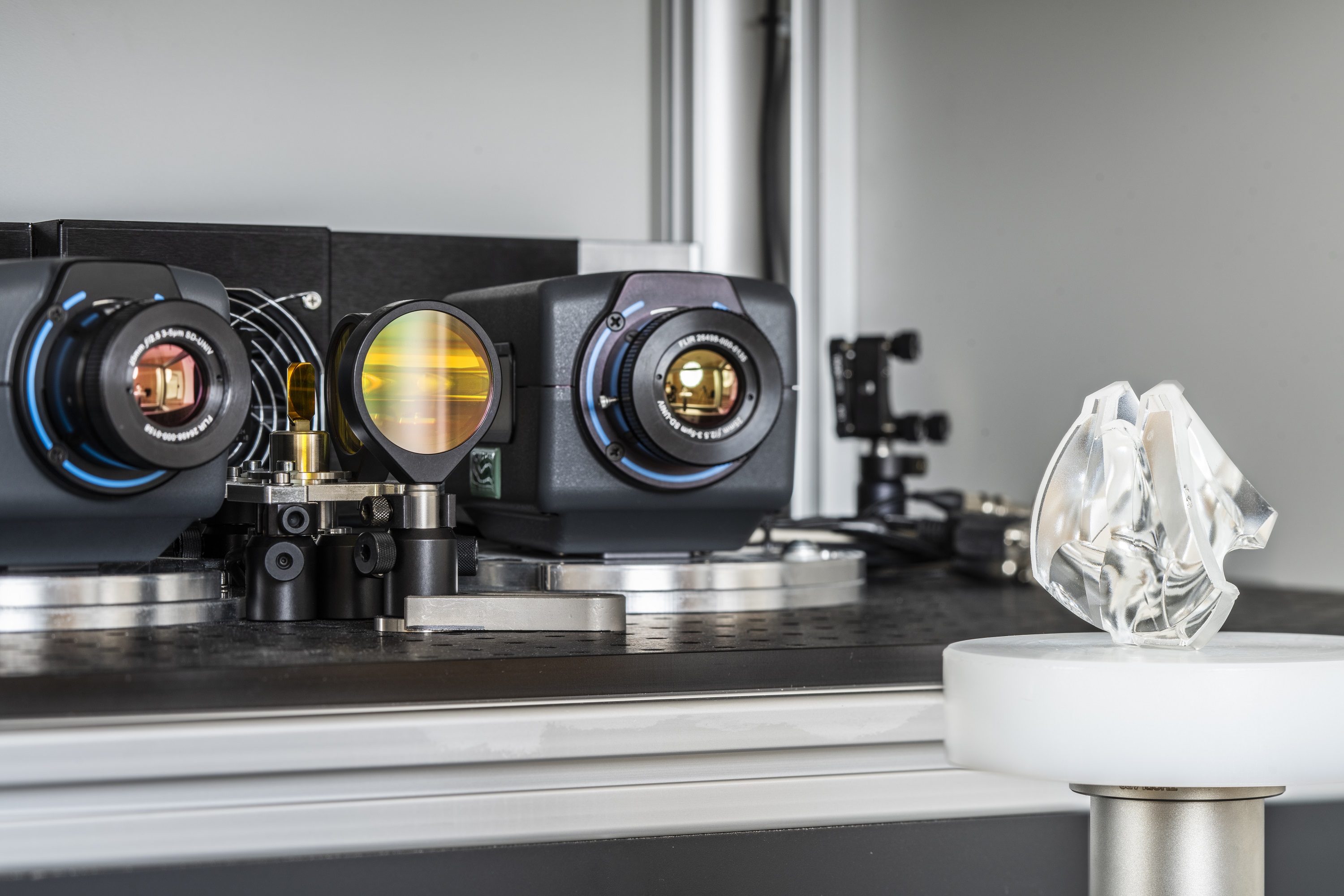

The applicability of optical surface measurement methods depends strongly on the reflective properties of the material to be measured. Bright, matt-reflecting surfaces are ideal for optical 3D sensors. Such cooperative properties are not always present on parts and assemblies in production. Uncooperative, i.e. transparent, reflective or jet-black surfaces can only be measured with lower accuracy or not at all using conventional optical measurement systems, or require the application of an additional matte coating prior to measurement.
With sequential thermal fringe projection, the Fraunhofer Institute for Applied Optics and Precision Engineering IOF Jena has developed a method that makes uncooperative surfaces directly measurable. While conventional optical sensors record the light diffusely reflected from the surface, the »Glass360Dgree« system uses the thermal radiation emitted by the surface itself.
The sensor of the »Glass360Dgree« consists of a stereo pair of two thermal imaging cameras and a special projection system. The projection system directs the light of a 40-watt CO2 laser (wavelength 10.6 µm) as a narrow line onto the surface. After just a few milliseconds of irradiation, the object at this line shows an increased temperature of a few Kelvin. The thermal imaging cameras see this as a clear radiance contrast.
For the 3D shape measurement, this thermal fringe is moved sequentially over the surface with an optical scanner. The two »Flir A6753sc« cameras record this at a frame rate of 125 Hz. Corresponding pixel pairs are identified with the aid of a correlation function and the 3D coordinates of the object point are determined according to the principle of triangulation. In a 180 x 140 mm² sized field of view, accuracies of between 10 and 50 µm are achieved, depending on the scanning speed. The raw acquisition time can be reduced to less than one second. In the »Glass360Dgree«, the object is placed onto a turntable so that an all-around 3D model is automatically reconstructed from several individual views.
The principle of »Glass360Dgree« allows to apply the advantages of fast, optical, non-contact measurement technology even at uncooperative material classes. Objects made of transparent glass or plastic become just as measurable as highly glossy or jet-black components.
